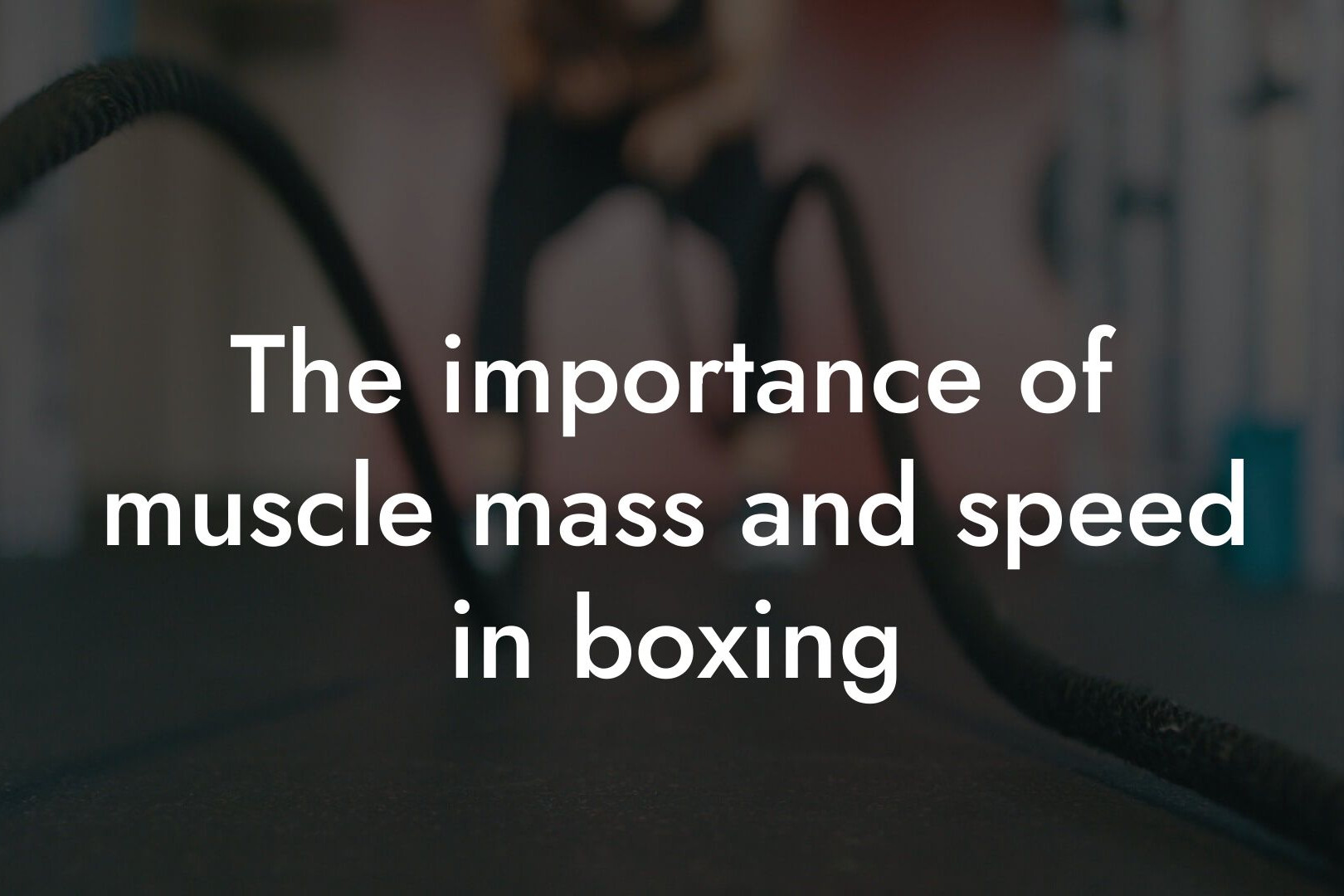As a professional boxer, achieving an optimal body fat percentage is crucial for performance, health, and overall success in the ring. Excess body fat can hinder agility, speed, and endurance, making it challenging to compete at a high level. In this article, we will delve into the importance of reducing body fat for optimal weight class in boxing, and provide a comprehensive guide on how to achieve it.
Table of Contents
The Ideal Body Fat Percentage for Boxers
The ideal body fat percentage for boxers varies depending on the weight class and individual goals. Generally, a body fat percentage between 6-12% is considered optimal for most boxers. However, some boxers may need to achieve a lower body fat percentage to reach their desired weight class. For example, a boxer competing in the lightweight division (135 lbs) may aim for a body fat percentage around 5-8%, while a boxer in the heavyweight division (200+ lbs) may aim for a body fat percentage around 10-12%.
Benefits of Reducing Body Fat for Boxing
Reducing body fat for optimal weight class in boxing offers numerous benefits, including:
• Improved performance: Excess body fat can slow down a boxer's movements, making it challenging to evade opponents' attacks. By reducing body fat, boxers can improve their speed, agility, and overall performance.
• Enhanced endurance: Carrying excess body fat can lead to fatigue and decreased endurance. By reducing body fat, boxers can increase their stamina and perform at a higher level throughout the fight.
• Better recovery: Reducing body fat can aid in faster recovery between rounds and fights. This allows boxers to train more frequently and at a higher intensity.
• Increased confidence: Achieving an optimal body fat percentage can boost a boxer's confidence, leading to improved mental toughness and a competitive edge.
Understanding Body Composition Analysis
Before starting a body fat reduction program, it's essential to understand body composition analysis. Body composition analysis measures the percentage of fat mass versus lean mass in the body. This information is crucial for boxers, as it helps them identify areas for improvement and track progress.
At Tano Performance Group, we use DEXA (Dual-Energy X-ray Absorptiometry) scanning to provide a comprehensive body composition analysis. DEXA scanning is a non-invasive, highly accurate method that measures bone density, lean mass, and fat mass. This information is essential for creating a personalized body fat reduction plan tailored to a boxer's specific needs.
Creating a Body Fat Reduction Plan
Developing a body fat reduction plan requires a combination of proper nutrition, training, and recovery strategies. Here are some tips to get started:
• Caloric deficit: Create a caloric deficit by reducing daily caloric intake or increasing energy expenditure through exercise. Aim for a deficit of 500-1000 calories per day to promote weight loss while preserving lean mass.
• Macronutrient balance: Ensure a balanced diet consisting of protein, carbohydrates, and healthy fats. Aim for 1.6-2.2 grams of protein per kilogram of body weight, 2-3 grams of carbohydrates per kilogram of body weight, and 0.5-1 gram of healthy fats per kilogram of body weight.
• Hydration: Drink plenty of water throughout the day to aid in fat loss and overall health. Aim for at least 8-10 glasses of water per day.
• Resistance training: Incorporate resistance training exercises to build and maintain lean mass. Focus on compound exercises such as squats, deadlifts, and bench press.
• Cardiovascular training: Incorporate cardiovascular exercises such as running, jumping rope, or cycling to improve endurance and burn calories. Aim for at least 20-30 minutes of moderate-intensity cardio per session, 3-4 times per week.
• Recovery: Prioritize recovery strategies such as foam rolling, stretching, and proper sleep to aid in muscle recovery and growth. Aim for 7-9 hours of sleep per night and take rest days as needed.
Monitoring Progress and Adjusting the Plan
Regularly monitoring progress is crucial to achieving optimal body fat percentage. Use the following methods to track progress:
• Body fat percentage measurements: Use DEXA scanning or skinfold measurements to track changes in body fat percentage.
• Weight and body composition tracking: Use a food diary or mobile app to track daily food intake, weight, and body composition.
• Progress photos: Take progress photos at regular intervals to visualize changes in body composition.
• Performance metrics: Track performance metrics such as speed, agility, and endurance to ensure improvements in overall fitness.
Based on progress, adjust the body fat reduction plan as needed. This may involve tweaking nutrition, training, or recovery strategies to optimize results.
Common Mistakes to Avoid
When attempting to reduce body fat for optimal weight class in boxing, it's essential to avoid common mistakes that can hinder progress. These include:
• Crash dieting: Avoid extreme caloric restriction, as it can lead to muscle loss and decreased performance.
• Overtraining: Avoid overtraining, as it can lead to fatigue, injury, and decreased performance.
• Inadequate recovery: Neglecting recovery strategies can lead to muscle fatigue, decreased performance, and increased risk of injury.
• Lack of patience: Reducing body fat takes time and patience. Avoid expecting overnight results and focus on making sustainable lifestyle changes.
Achieving an optimal body fat percentage is crucial for boxers looking to improve performance, health, and overall success in the ring. By understanding the importance of body fat reduction, creating a personalized plan, and monitoring progress, boxers can reach their desired weight class and achieve peak performance. Remember to avoid common mistakes, stay patient, and focus on making sustainable lifestyle changes to achieve optimal body fat percentage and reach the top of the boxing world.
Frequently Asked Questions
What is the ideal body fat percentage for a boxer?
For boxers, the ideal body fat percentage varies depending on the weight class and individual goals. Generally, a body fat percentage between 6-12% is considered optimal for most boxers, allowing for a balance between strength, power, and endurance. However, some boxers may need to maintain a lower body fat percentage to meet specific weight class requirements.
How does body fat affect a boxer's performance?
Excess body fat can negatively impact a boxer's performance by reducing speed, agility, and endurance. It can also increase the risk of injury and decrease overall power output. On the other hand, having too little body fat can lead to fatigue, decreased strength, and impaired recovery. Maintaining an optimal body fat percentage is crucial for peak performance in the ring.
What is the best way to measure body fat percentage?
There are several methods to measure body fat percentage, including dual-energy X-ray absorptiometry (DXA), hydrostatic weighing, and skinfold measurements. At Tano Performance Group, we recommend using DXA scans for accurate and reliable measurements. This method provides a detailed breakdown of body composition, including bone density, lean mass, and body fat percentage.
How can I reduce my body fat percentage for boxing?
A comprehensive approach to reducing body fat percentage involves a combination of proper nutrition, consistent training, and sufficient recovery. Focus on consuming a balanced diet with plenty of protein, healthy fats, and complex carbohydrates. Incorporate high-intensity interval training (HIIT) and strength training exercises to build lean muscle mass. Additionally, prioritize adequate sleep and stress management to support fat loss and overall health.
What is the role of nutrition in reducing body fat for boxing?
Nutrition plays a critical role in reducing body fat percentage for boxing. A well-structured diet should provide adequate energy for training while promoting fat loss and lean muscle growth. Focus on whole, nutrient-dense foods, including lean proteins, complex carbohydrates, and healthy fats. Avoid processed and high-calorie foods that can hinder fat loss and impair performance.
How many calories should I consume daily to reduce body fat?
The ideal daily caloric intake for reducing body fat varies depending on individual factors, such as weight, height, and activity level. As a general guideline, aim for a daily caloric deficit of 500-1000 calories to promote weight loss while preserving lean muscle mass. However, it's essential to consult with a registered dietitian or nutritionist to determine a personalized caloric needs plan.
What are the best macronutrients for fat loss and muscle growth?
A balanced diet for fat loss and muscle growth should consist of a combination of protein, carbohydrates, and healthy fats. Aim for a daily intake of 1.6-2.2 grams of protein per kilogram of body weight, 2-3 grams of complex carbohydrates per kilogram of body weight, and 0.5-1 gram of healthy fats per kilogram of body weight. This macronutrient ratio will support lean muscle growth and fat loss.
How often should I train to reduce body fat for boxing?
A well-structured training program for reducing body fat should include a combination of cardiovascular exercise, strength training, and high-intensity interval training (HIIT). Aim for 3-4 cardiovascular sessions, 2-3 strength training sessions, and 1-2 HIIT sessions per week. Be sure to include rest days and active recovery sessions to avoid overtraining and promote optimal fat loss.
What is the importance of hydration in reducing body fat?
Proper hydration is essential for optimal fat loss and overall health. Aim to consume at least 8-10 glasses of water per day, and make sure to drink water before, during, and after training sessions. Adequate hydration will help boost metabolism, improve digestion, and support overall fat loss.
Can I reduce body fat too quickly?
Yes, reducing body fat too quickly can be detrimental to overall health and performance. Aim for a gradual weight loss of 0.5-1 kg per week to ensure a sustainable and healthy approach to fat loss. Rapid weight loss can lead to muscle loss, decreased strength, and impaired recovery.
How can I maintain lean muscle mass while reducing body fat?
Maintaining lean muscle mass while reducing body fat requires a combination of proper nutrition and consistent training. Focus on consuming a high-protein diet, and incorporate strength training exercises to build and preserve lean muscle mass. Additionally, prioritize adequate rest and recovery to support muscle growth and repair.
What is the role of sleep in reducing body fat for boxing?
Sleep plays a critical role in reducing body fat for boxing. Aim for 7-9 hours of sleep per night to support fat loss, muscle recovery, and overall health. Poor sleep quality and duration can disrupt hormones, metabolism, and overall fat loss efforts.
How can I manage stress to support fat loss and overall health?
Chronic stress can hinder fat loss and overall health. Engage in stress-reducing activities, such as yoga, meditation, or deep breathing exercises, to manage stress levels. Additionally, prioritize time management, goal setting, and social support to minimize stress and promote overall well-being.
What are the benefits of working with a registered dietitian or nutritionist?
Working with a registered dietitian or nutritionist can provide personalized guidance and support for reducing body fat and improving overall health. They can help create a tailored nutrition plan, provide accountability, and offer ongoing support to ensure a successful and sustainable approach to fat loss.
How long does it take to notice improvements in body composition?
The time it takes to notice improvements in body composition varies depending on individual factors, such as starting point, diet, and training. However, with a consistent and well-structured approach, most individuals can expect to notice improvements in body composition within 6-12 weeks.
What are the risks of extreme weight cutting in boxing?
Extreme weight cutting can lead to severe dehydration, electrolyte imbalances, and decreased performance. It can also increase the risk of injury, illness, and even death. Avoid extreme weight cutting methods, and instead focus on a sustainable and healthy approach to reducing body fat.
How can I track my progress and stay motivated?
Track your progress by taking regular body fat percentage measurements, weight, and circumference measurements. Use a food diary or mobile app to monitor your nutrition, and take progress photos to visualize your improvements. Celebrate small victories, set realistic goals, and find a workout buddy or accountability partner to stay motivated and engaged.
What is the importance of consistency and patience in reducing body fat?
Consistency and patience are essential for reducing body fat and achieving optimal body composition. Avoid fad diets and quick fixes, and instead focus on making sustainable lifestyle changes that promote long-term fat loss and overall health.
How can I balance my boxing training with fat loss goals?
Balance your boxing training with fat loss goals by prioritizing high-intensity interval training (HIIT) and strength training exercises. Focus on building lean muscle mass, and incorporate cardiovascular exercise to improve endurance and burn fat. Be sure to include rest days and active recovery sessions to avoid overtraining and promote optimal fat loss.
What are the benefits of incorporating strength training in a fat loss program?
Incorporating strength training in a fat loss program can help build lean muscle mass, increase metabolism, and improve overall body composition. It can also enhance athletic performance, reduce the risk of injury, and improve bone density.
How can I stay flexible and adaptable with my fat loss plan?
Stay flexible and adaptable with your fat loss plan by regularly reassessing your goals, progress, and nutrition plan. Be willing to make adjustments as needed, and don't be afraid to seek guidance from a registered dietitian or nutritionist. Remember, fat loss is a journey, and it's essential to be patient, consistent, and open to change.
Here are some related articles you might love...
- The importance of muscle mass and speed in boxing
- Bone density and injury prevention in boxing
- Balancing power, speed, and endurance in boxing
- Strength and conditioning programs for amateur boxers
- Nutrition tips for maintaining energy and muscle in boxing
- How body composition affects performance in boxing
- Off-season training for amateur boxers
- Recovery strategies for boxers after sparring sessions
- The role of DEXA scans in boxing training and weight management
Zak Faulkner
Zak Faulkner is a leading authority in the realm of physical health and body composition analysis, with over 15 years of experience helping professionals optimise their fitness and well-being. As one the experts behind Tano Performance Group, Zak has dedicated his career to providing in-depth, science-backed insights that empower clients to elevate their physical performance and overall health.
With extensive knowledge of DEXA technology, Zak specializes in delivering comprehensive body assessments that offer precise data on body fat, muscle mass, bone density, and overall physique. His expertise enables individuals to make informed decisions and achieve their fitness goals with accuracy and confidence. Zak’s approach is rooted in a deep understanding of human physiology, combined with a passion for helping clients unlock their full potential through personalised strategies.
Over the years, Zak has earned a reputation for his commitment to excellence, precision, and client-focused service. His guidance is trusted by top professionals who demand the best when it comes to their health. Whether advising on fitness programs, nutritional strategies, or long-term wellness plans, Zak Faulkner’s insights are a valuable resource for anyone serious about taking their health and fitness to the next level.
At Tano Performance Group, Zak continues to lead our Content Team revolutionising how professionals approach their physical health, offering unparalleled expertise that drives real results.




